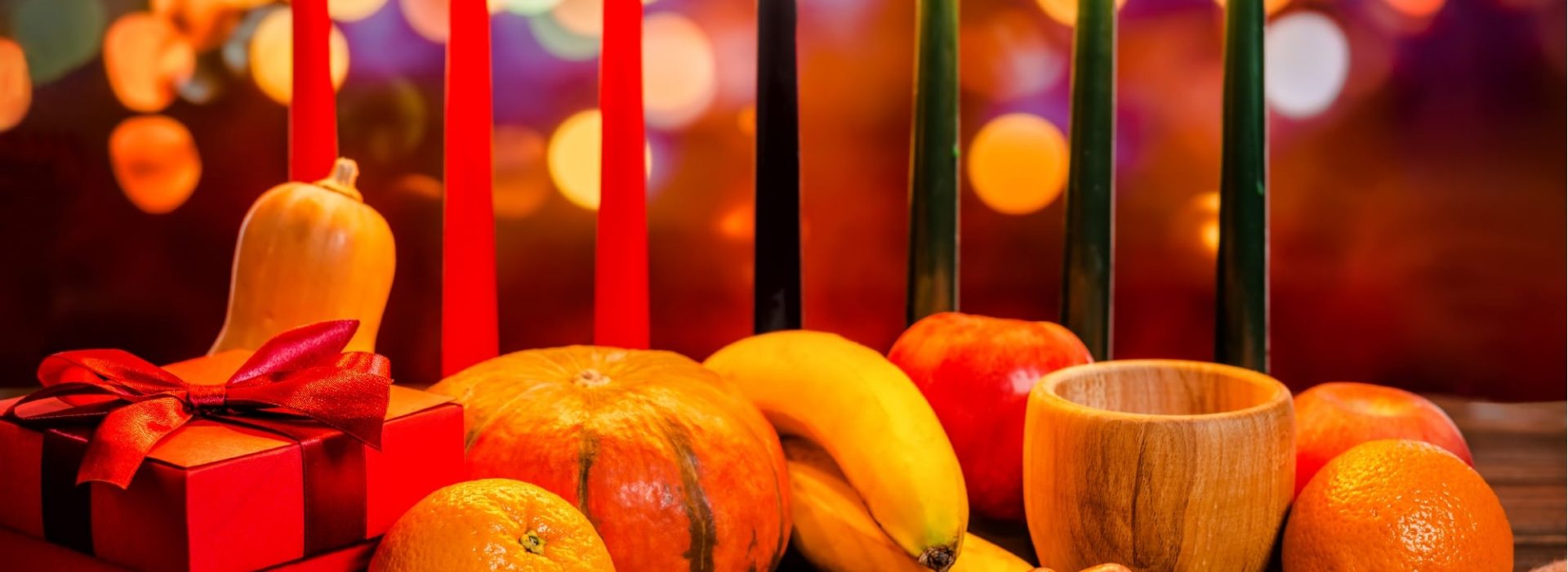Kwanzaa Holiday: What’s to Have for Dessert?
Dr. Maulana Karenga created the Kwanzaa holiday in LA in response to the 1965 Watts Riots. These riots saw multiple deaths, injuries, and arrests when a roadside argument with the authorities escalated. Karenga, an African American studies professor, author, and activist was frustrated with the state of affairs. He wanted to “give Blacks an alternative to the existing holiday and give Blacks an opportunity to celebrate themselves and their history, rather than simply imitate the practice of the dominant society.” Join us in exploring the evolution of the holiday and see which Kwanzaa desserts are popular for our southern neighbours.
The History of Kwanzaa
In its early years, Kwanzaa was an alternative to Christmas. Karenga questioned many aspects of Christianity and wanted those of African descent to instead celebrate their own history, not one merely prescribed by their surroundings. This is understandable coming from Dr. Karenga, who was incredibly active in the Black Power movement of the 60s and 70s. He eventually co-founded the Black nationalist group, US Organizationwith Hakim Jamal. The group’s aim was to promote African-American culture exclusively.
It wasn’t until 1997 that Kwanzaa was declared a combined celebration of family, community, and culture. It was no longer an alternative, but rather a complimentary celebration to an individual’s religious beliefs and holiday traditions. For this reason today, it’s not uncommon to see some African-Americans celebrating both Christmas and Kwanzaa.
The Kwanzaa holiday runs for seven days between December 26 and January 1. This is in conjunction with various African harvest festivals where people gave sacrifices to the Gods responsible for the bountiful harvests. The Swahili phrase matunda ya kwanza, which means “first fruits of the harvest” is the basis for the holiday’s name, and is tied to the December solstice. It’s said that there are no fixed rules when it comes to the main meals and desserts. The majority of North American celebrations include combinations from sub-Saharan Africa, soul foods from the south, and Caribbean flavours from the Atlantic rim.
Traditional Kwanzaa Desserts
We can see a predominance of Southern, African and even Caribbean foods during Kwanzaa. It’s not uncommon for families to consume savoury items like cornbread and grits. But for Kwanzaa desserts, we see mostly sweet potato pies. Another interesting dessert is the delicious creation from Louisiana, bananas foster, which reminds us of the flambeed crepes Suzette and bombes. We first cook the bananas in butter, brown sugar, and rum, before setting them alight and serving with vanilla ice cream. On the point of crepes, you can actually serve this concoction as a crepe filling in some New Orleans establishments.
For the chocolate fans, there’s the Creole cake, or Cajun chocolate cake. People typically make it with cocoa, buttermilk, brown sugar, pecans, and sometimes coconut. For those coconut fiends, there’s the coconut pound cake, which may be baked in a rectangular bread pan. Sometimes though, we see doughnut-shaped bundt pan versions.
Seven Principles of Kwanzaa
Karenga’s site states that celebrations are organised around “five fundamental activities: ingathering of the people; special reverence for the creator and creation; commemoration of the past; recommitment to the highest cultural values; and celebration of the Good”. An act of cultural recovery and reconstruction, the seven days of Kwanzaa are structured around seven core communitarian African values. These are the Nguzo Saba, or ‘The Seven Principles’. All directed toward reinforcing family, community, and culture, we see:
- “Umoja (unity)—To strive for and maintain unity in the family, community, nation, and race.
- Kujichagulia (self-determination)—To define ourselves, name ourselves, create for ourselves, and speak for ourselves.
- Ujima (collective work and responsibility)—To build and maintain our community together and make our brother’s and sister’s problems our problems and to solve them together.
- Ujamaa (cooperative economics)—To build and maintain our own stores, shops, and other businesses and to profit from them together.
- Nia (purpose)—To make our collective vocation the building and development of our community in order to restore our people to their traditional greatness.
- Kuumba (creativity)—To do always as much as we can, in the way we can, in order to leave our community more beautiful and beneficial than we inherited it.
- Imani (faith)—To believe with all our heart in our people, our parents, our teachers, our leaders, and the righteousness and victory of our struggle.”
Regardless of what you celebrate each December, we can all agree on the value of family, community, and cultural identity. We hope everyone is having a safe break! If this Kwanzaa holiday post has you curious to see what African-inspired Kwanzaa desserts are available near you, we’re more than happy to point you in the direction of some local bakeries and dessert shops these holidays.





